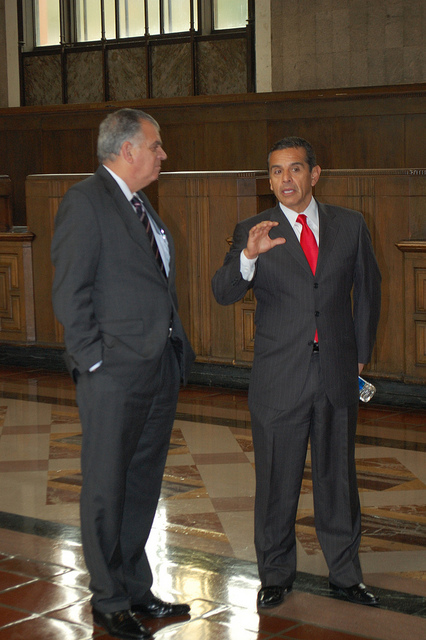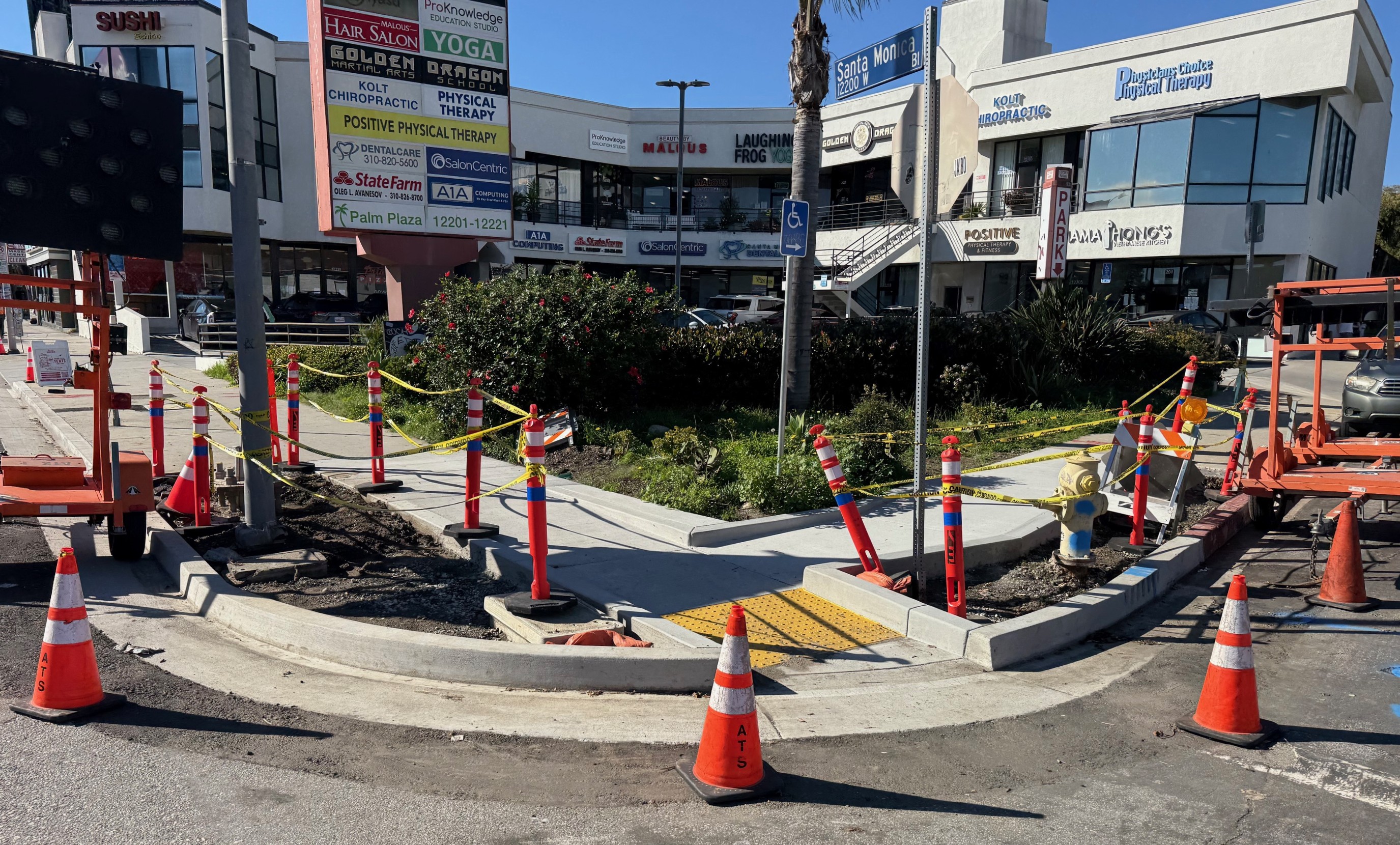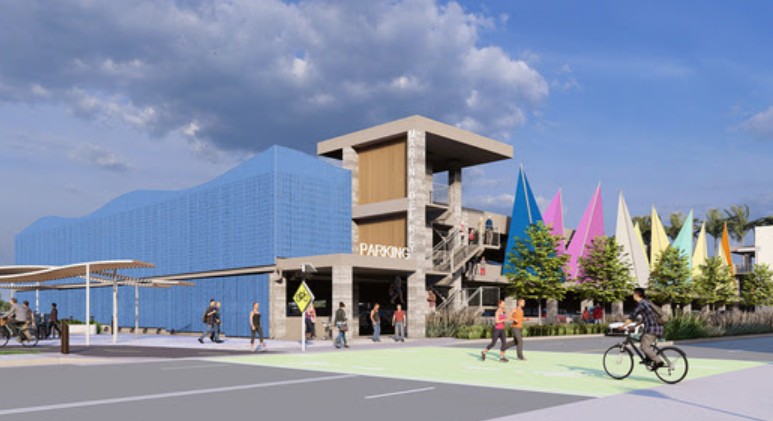Earlier this week, the Mayor's Office called to set up a brief chat between Streetsblog and Mayor Villaraigosa during his trip to Capitol Hill as part of "L.A. on the Hill," a yearly lobbying sojourn of L.A.'s elite. The trip coincided with a crucial vote on the reuthorization of the Surface Transportation bill, which failed yesterday to get the needed 60 votes to move to the Senate floor.
But the Mayor is still positive that his signature project, America Fast Forward, will move forward in some form when the legislature finally does pass some sort of extension of the legislation that guides federal transportation policy and funding. Whether that happens sooner, as the Mayor hopes, or after the election, as many Hill watchers fear, remains to be seen.
In private meetings with other elected officials and Secretary LaHood, Villaraigosa isn't hearing a lot of buzz about efforts to strip bicycle and pedestrian funding proposals from the transportation funding legislation. After commenting that such proposals didn't make any sense, he seemed to hedge his bets a little noting, a "there's folks that don't make any sense here in teh Beltway."
In the meantime, Villaraigosa is looking forward to CicLAvia, an event he is "very proud of." The mayor noted that each CicLAvia is bigger and better than the one before. He looks forward to being out on the street to see what the next CicLAvia holds.
Read on for our full interview. Streetsblog's comments are in bold.:
Your office called us, I’m guessing you had something you wanted to talk about?
First off, thank you for the work that you do to really promote our roads and our streets as places where we should be able to get in our car, hopefully in a carpool, or buses, or public transportation or walk and bike as well.
I would prefer to do more of a question and answer. What do you want to talk about?
I’m here in D.C. as you know with “L.A. on the Hill” which is the opportunity for Angelenos, business leaders and non-profit leaders, labor, to come together with the Mayor to the hill with the mayor and advocate for the city of la and advocate for the region. In this case, we’re hear focusing on the surface transportation bill which you know Is so important. We must pass this legislation.
It’s on the floor of the Senate as we speak. It’s my hope that it will pass the Senate next week at sometime then goes to the House and get approved there.
It’s a $110 billion two year bill. If we pass it, we save about 1.8 million jobs, but we also have a chance to add another 1 million jobs with America Fast Forward. This is L.A.’s plan that we used to call the 30/10 Plan. It accelerates 30 years of transportation projects to a ten year period. It now has the support of 124 mayors and we call it America Fast Forward.
It would extend the TIFIA Loan Program from the current $124 million to $1 billion. And it incentivizes cities such as ours to invest in transportation, transit and infrastructure.
There’s been a lot of controversy surrounding the House version of the transportation bill. Has any of the backlash against the bill impacted the House Republican’s feelings about America Fast Forward? Is the enthusiasm still there on the House Side?
I think the enthusiasm is still there. Chairman Mica supports America Fast Forward and the expansion of the TIFIA loan program. In a time of vast deficiets, I have to believe that the majority of Republicans are supportive of it. That’s really not the controversial part of the bill.
Unfortunately, some members of the House on the Republican side are questioning whether or not we should make investment in our highway program and invest in our roads and bridges. I find that absolutely beyond the pale and non-sensical.
Look, for 60 years there has been bi-partisan support for making those investments. We have to make them going into the future. There’s too much at stake.
When you’re meeting with Senator Boxer and Feinstein’s office, or any of the local delegation, is there any particular projects, either being built, being planned, or under discussion, that are hot topics.
There’s been conversations with Ray LaHood. He called Los Angeles “the template for what cities ought to do when it comes to transportation and infrastructure investment.” He also signaled us out as the city that has been making a national case for this kind of investment. We haven’t spoken specifically on this trip about any individual project except about the $81 million in the president’s budget for the Subway and Regional Connector.
Most of the conversations, with LaHood or with the Senators and Congressmen, have been about the surface transportation bill.
There’s been some controversy about bicycle and pedestrian funding in the surface transportation bill about bicycle and pedestrian funding. Is this a major issue going forward? How worried should bicycle and pedestrian advocates be?
I think most people get it. Look…part of what you’ve done, and what urban planners in cities around the country have argued for is that our streets have to be shared. They have to be shared with the automobile. They have to be shared with folks moving goods. They have to be shared with our public transportation vehicles. They have to be shared with our bicyclists. They have to be shared with pedestrians.
The idea that we wouldn’t fund the multi-uses with our streets must support, it makes no sense.
Unfortunately, there are some people that don’t make a lot of sense here in the beltway.
Heck, there’s folks that don’t make any sense up here in the beltway.
I told your staffer earlier I used to work for an environmental group that spent time on the Hill to explain that I understood that schedules are fluid. The same applies to my opinion on how much sense some people make.
Absolutely. Anything else?
Changing gears, we’re starting to work on our pre-CicLAvia coverage. Last time I got to ride with you and Antonio Jr. for awhile. Any plans for this time?
“It’s good to go out again and I love it.
I couldn’t be prouder of CicLAvia. We had been talking about it for awhile. After breaking my elbow I talked to my staff and I told my staff we’re done talking. We’re going to make it happen. I’ve been really proud of the result.
Each one of these has been bigger and has had more happening than the one before. It felt like there were several hundred thousand people out there. That’s a lot of people in any city.
A lot of cities have been doing this long before us, but I don’t know many cities that get 100,000 or 200,000 people out there on a bike. It’s a testament that people are tired of traffic and tired of congestion and want to slow it down a bit to use their streets as public places, not just a place to get from one place to another.







